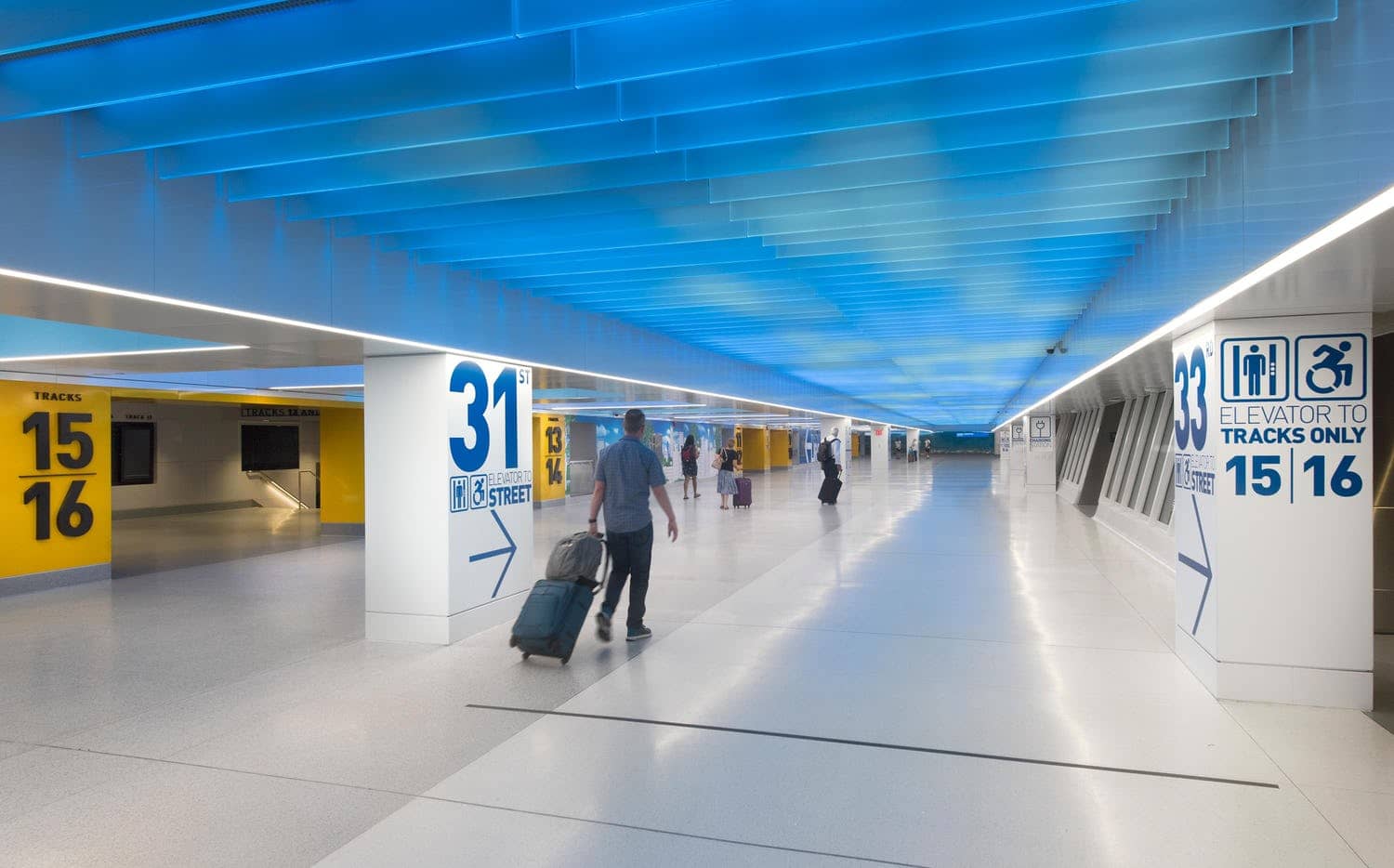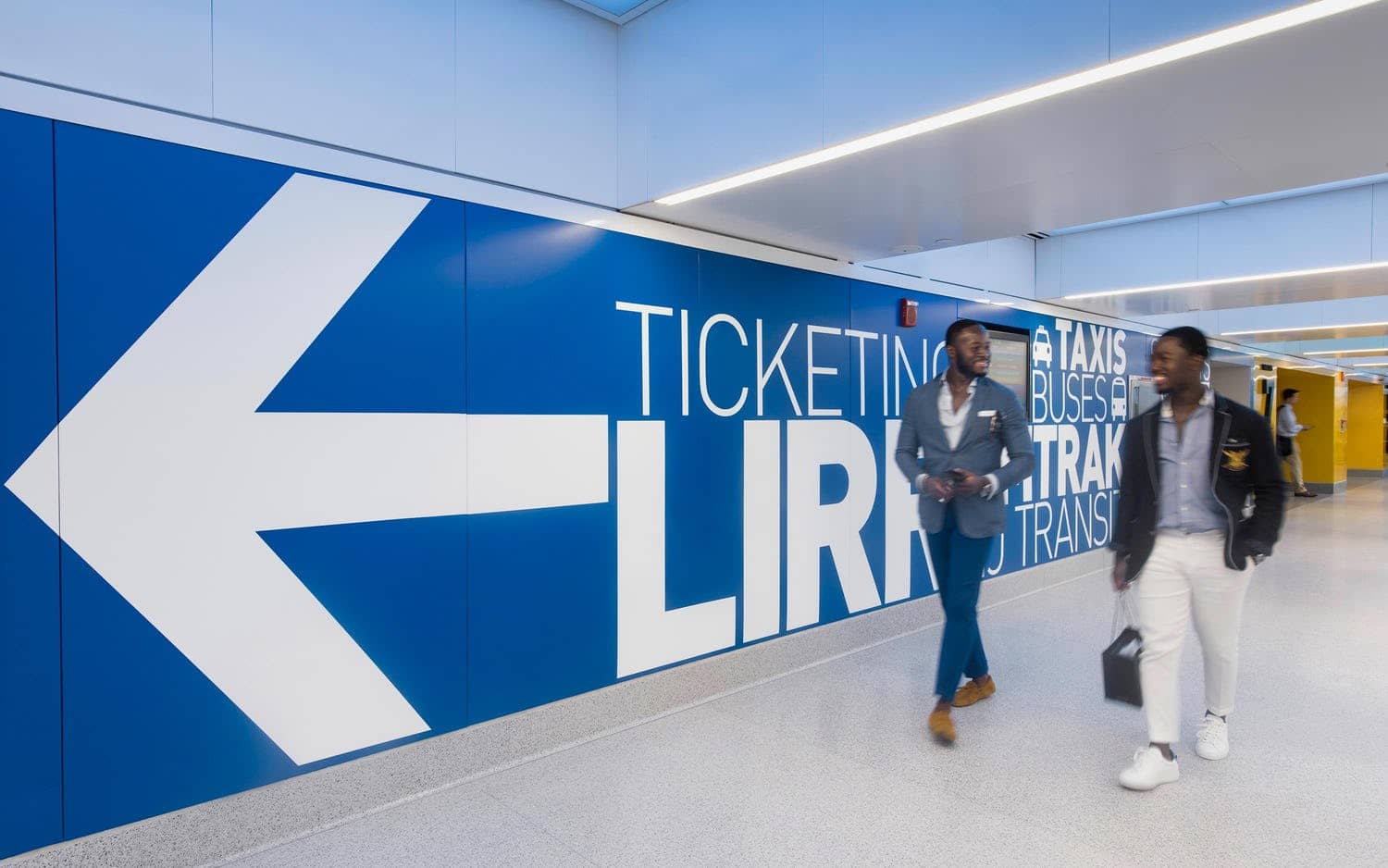
Moynihan Station
Moynihan Station
Moynihan Station
Moynihan Station
At Pentagram, I worked on the wayfinding system for Moynihan Station—a state-led transformation of the historic James Farley Post Office into an extension of Penn Station.
The design pushes the boundaries of traditional transit signage, combining expressive supergraphics and suspended tactile signs reminiscent of historic railway systems. Using New York State’s yellow and blue, the system balances clarity, character, and respect for the building’s landmark identity while guiding hundreds of thousands of commuters each day.
Creative Direction: Michael Gericke and Don Bilodeau
Design Team: Melisa Ozkan and June Lee
Photography: Pentagram
Featured on: Curbed New York, 6sqft, Untapped New York, SEGD (Society for Experiential Graphic Design)
Moynihan Station is a state sponsored project to transform the James Farley post office into a new train station, as an extension of Penn Station. The west end concourse, the first phase of this project, is one of the main projects I worked on at Pentagram.
Like all signage projects, I was working within a given system and a set of constraints. The design of the signs are informed by the constraints of the architectural elements, the flow of people and traffic, the ADA regulations, the necessary messaging to help commuters find their destinations, and the legibility, design and proportions of the type itself.
The first process involved understanding the user pain points and needs in relations to the space by studying the plan of the space from architectural drawings, and identifying the patterns of traffic flows (where people come from, where they want to go). Then we identified the decision points – which are the main intersections or where people stop to make decisions about where they are going. Then we decided on where the signs should go, what the messaging should be and how they should look. All of this was done with careful coordination with clients and architects.
In terms of aesthetics, we were trying to push the boundaries of standard wayfinding systems to be more expressive, graphic, and integrated, while still achieving the goal of helping hundreds of thousands of commuters find their paths and respecting the identity of the architecture as a historical landmark. We used a combination of mural like super graphics and suspended tactile signs that recall old railway signage, and yellow and blue to represent's New York's state colors.
Creative Direction: Michael Gericke and Don Bilodeau
Design Team: Melisa Ozkan and June Lee
Photography: Pentagram
Featured on: Curbed New York, 6sqft, Untapped New York, SEGD (Society of Experiential Graphic Design)
Moynihan Station is a state sponsored project to transform the James Farley post office into a new train station, as an extension of Penn Station. The west end concourse, the first phase of this project, is one of the main projects I worked on at Pentagram.
Like all signage projects, I was working within a given system and a set of constraints. The design of the signs are informed by the constraints of the architectural elements, the flow of people and traffic, the ADA regulations, the necessary messaging to help commuters find their destinations, and the legibility, design and proportions of the type itself.
The first process involved understanding the user pain points and needs in relations to the space by studying the plan of the space from architectural drawings, and identifying the patterns of traffic flows (where people come from, where they want to go). Then we identified the decision points – which are the main intersections or where people stop to make decisions about where they are going. Then we decided on where the signs should go, what the messaging should be and how they should look. All of this was done with careful coordination with clients and architects.
In terms of aesthetics, we were trying to push the boundaries of standard wayfinding systems to be more expressive, graphic, and integrated, while still achieving the goal of helping hundreds of thousands of commuters find their paths and respecting the identity of the architecture as a historical landmark. We used a combination of mural like super graphics and suspended tactile signs that recall old railway signage, and yellow and blue to represent's New York's state colors.
Creative Direction: Michael Gericke and Don Bilodeau
Design Team: Melisa Ozkan and June Lee
Photography: Pentagram
Featured on: Curbed New York, 6sqft, Untapped New York, SEGD (Society for Experiential Graphic Design)




